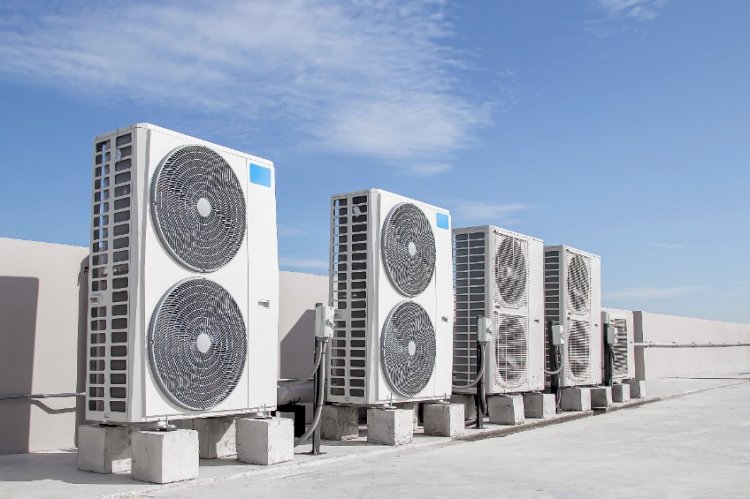Australia HVAC Market Size Set to Grow at Steady CAGR of 6.16%
An increasing consumer demand for comfort and the growing focus on building and offering energy-efficient systems are projected to propel the expansion of the Australia HVAC Market during the forecast period between 2023 and 2029.

BlueWeave Consulting, a leading strategic consulting and market research firm, in its recent study, estimated the Australia HVAC Market size at USD 1.09 billion in 2022. During the forecast period between 2023 and 2029, BlueWeave expects the Australia HVAC Market size to grow at a significant CAGR of 6.16% reaching a value of USD 1.56 billion by 2029. Major growth drivers for the Australia HVAC Market include the increasing adoption of HVAC systems in residential settings, a burgeoning population, expanding industrial production, and a thriving construction and real estate industry. The surge in demand for HVAC systems is notably witnessed in response to heightened climatic challenges, with a particular emphasis on the food and beverage sector, where integration is rising due to legislative efforts to establish efficient cold supply chains. The transition from conventional to modern industrial practices underscored a need for temperature control systems, leading to widespread HVAC adoption across residential, commercial, and industrial sectors. The burgeoning construction sector in the mid-tier buildings of Australia and New Zealand, coupled with the growing interest in smart homes, urbanization, and industrialization, further propels the demand for HVAC systems. Also, the forecasted period boost the market's expansion through technological advancements such as IoT, automated control systems, and remote access. However, high installation cost of HVAC system is anticipated to restrain the overall market growth during the period in analysis.
Impact of Escalating Geopolitical Tensions on Australia HVAC Market
The Australia HVAC Market has been significantly impacted by intensifying geopolitical disruptions in recent times. For instance, the ongoing Russia-Ukraine conflict has disrupted supply chains, hindered the production processes essential for HVAC systems. As a result, uncertainties in sourcing crucial raw materials like copper, aluminum, steel, and plastic, integral to HVAC manufacturing, have emerged. These disruptions, creating a ripple effect, have further influenced consumer sentiment and prompted notable shifts in purchasing patterns within the HVAC sector. In addition, the sanctions imposed on Russia by the United States and other countries have reverberated globally, impacting the business landscape of HVAC manufacturers. Meanwhile, calls for economic disengagement from Russia by HVAC industry leaders may affect investments and influence the key players’ budget, thereby affecting affordability and the demand for HVAC systems and components. Beyond the war zones and disputed areas, collaborative research efforts and international partnerships that are crucial for the development of HVAC systems may face strain, potentially slowing down research and development in this field. In essence, these geopolitical tensions introduce uncertainties and challenges across various dimensions of the Australia HVAC Market.
Despite the current challenges posed by geopolitical tensions, there are potential growth opportunities for the Australia HVAC Market. Solutions involve tackling labor shortages, exploring 3D printing for alternative materials, forming strategic alliances, negotiating prices, optimizing logistics, managing geopolitical impacts through consumer education, and boosting efficiency with technology and staff training. These proactive measures enhance resilience, positioning the Australia HVAC industry to navigate supply chain challenges effectively and ensure sustained growth.
Sample Request @ https://www.blueweaveconsulting.com/report/australia-hvac-market/report-sample
Australia HVAC Market – By Offering
Based on offering, the Australia HVAC Market is bifurcated into Equipment and Services segments. The equipment segment is expected to hold a higher market share during the forecast period. The equipment segment is further divided into Heating, Ventilation, and Cooling subsegments. Among them, the cooling subsegment holds the highest share in the Australia HVAC Market. It can be attributed to several factors such as the country's diverse climate, where effective cooling solutions are essential for residential, commercial, and industrial spaces. The demand for air conditioning and refrigeration systems, driven by the need for thermal comfort and climate control, significantly contributes to the cooling subsegment's market share. Additionally, advancements in cooling technologies, energy efficiency initiatives, and the rising awareness of environmental sustainability further elevate the significance and market presence of the cooling sub-segment in the Australia HVAC Market.
Competitive Landscape
Major players operating in the Australia HVAC Market include Blue Star Ltd., Daikin Industries Ltd, ETA General Pvt Ltd, Ingersoll-Rand Plc, LG Electronics Inc., Mitsubishi Electric Corp., Samsung Electronics Co. Ltd, and United Technologies Corp. To further enhance their market share, these companies employ various strategies, including mergers and acquisitions, partnerships, joint ventures, license agreements, and new product launches.
Contact Us:
BlueWeave Consulting & Research Pvt. Ltd
+1 866 658 6826 | +1 425 320 4776 | +44 1865 60 0662

























